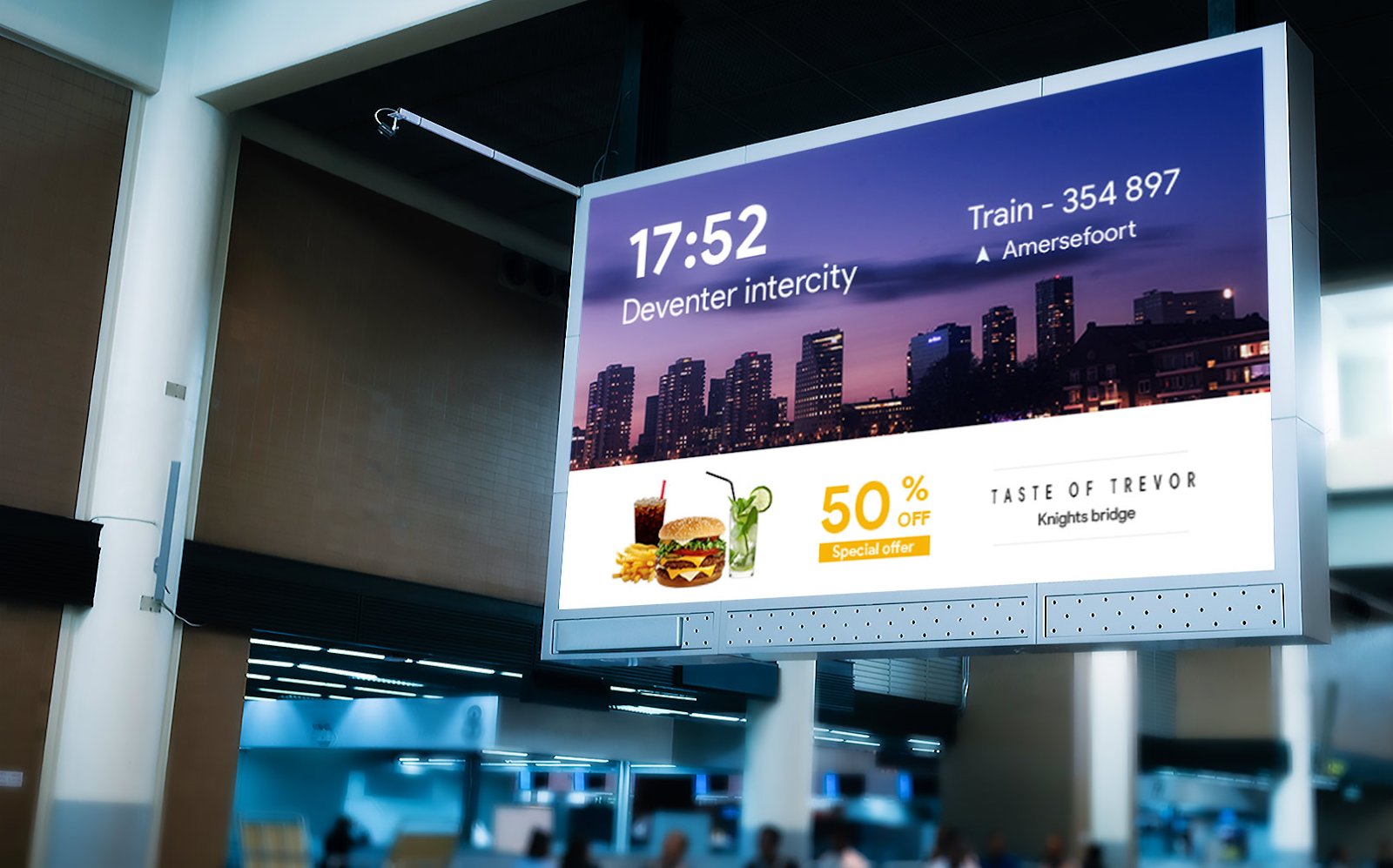In the current nature of the retail environment, larger and medium retailers are leveraging themselves to adopt digital signs to meet the present day complexed demands. Digital signs are revolutionizing the ways companies interact with clients, manage work processes and deliver unique and compelling store experiences. In this article, the author considers advantages, opportunities and potential issues associated with the use of digital signage solutions and their impact on the development of digital signage companies for retailers.
Enhancing Customer Engagement
Digital signage is particularly helpful in increasing customer engagement, and is thus one of the main advantages of using the tool. Digital signs do not simply provide physical content like printed or painted billboards and signs but they also have content that can change with the audience, time and place. It also enables the format to engage customers in real-time promotions, attractive graphic advertisements, and even custom messages.
For instance, in a shop selling clothes, digital signs can be used to advertise special offers during any specific period of the year or when certain items are available in the shops. Simultaneously, the capability of updating content in real-time keeps retailers on the cutting edge and far more effective at grabbing the buyers’ attention than signage.
However, digital signage solutions are compatible with customer behavior analytics which allows businesses to display content that caters for the shoppers. This makes it easy for the business to experience high levels of sales since it gets to deliver the right message to the right cable and satellite subscriber.
Streamlining Operations with Digital Signage
It is important that digital signage is not only seen as an external facing tool but also as a tool that helps to deliver back end processes in the retail stores. Through program management, businesses get to centralize control over them in different places, making it easy to standardize on branding, pricing, and messaging.
First, large and medium retailers face the problem of the uncoordinated activity of stores in the framework of other promotional campaigns. Digital signage firms deal with this challenge by offering platforms that can be used to control contents from a distance.
What this means is that instead of having to change the content on its independent basis by making a round tour to all outlets of the company, the retailers can relay their work to a central station and program the changes in the promotional content for all outlets at once.
ALSO, digital signage can enhance communication issues within the employees. For example, screens located in the zones where only employees have free access show the schedules, corporate messages, training documentation, etc., to get the employees informed and aligned without printing thousands of papers.
Cost Efficiency and Sustainability
Thus, while the use of the digital signage may involve some capital investment initially, the returns in the long term are quite small. While print and place signs can often be seen, they require frequent reproduction and replacement, posing challenges especially to large and medium retailers carrying out multiple outlets. In contrast, the digital signages can be changed at any one time and reused severally hence lowering expenses incurred in materials and personnel.
A similar way that digital signage companies have also found a way to let their clients understand that their solutions offer sustainability besides meeting everyday needs and other goals. Digital signs are useful in saving the environment in that they do not require papers and inks to write notices which makes the retailers friendly towards the environment. It is in accordance with the modern focus of clients on companies, which pay great attention to such an aspect as sustainability, which has a positive impact on brand identity and client retention.
Driving Sales Through Interactive Displays
Of the many types of applications using digital signage, the most vital to retailers is the use of interactive displays. Such displays are no longer mere information presentations that can be observed from a distance; instead, they become a direct interface between the customer and the product.
They can also be used by retailers to share information on products, facilitate browsing the goods or for virtual fitting. For instance, a store that sells cosmetics might incorporate an application into their kiosk that allows a shopper to virtually apply different cosmetics looks to a live video feed, or a furniture retailer may utilize augmented reality to demonstrate how the item being sold would look in the purchaser’s home.
Besides improving the customer experience, most of the interactive applications can also benefit the retailer in terms of its business intelligence. Thus, the interactions’ monitoring will provide information concerning the clients’ preferences and actions and create a better environment for marketing activities.
Choosing the Right Digital Signage Partner
Choosing a proper digital signage partner is crucial with such solutions’ application. Digital signage organizations provide all sorts of solutions and services and it includes hardware and software installation services, content services and technical support services. Retailers need to assess partners by their specialization, Sphere of Influence and capability to provide targeted solutions.
To the large and medium retailers scalability is a key concern. The digital signage system of choice should have expansion capabilities that allow it to meet new realities in business. Also, adequate maintenance and service support services that would enable the system to run efficiently at all times are important.
Retailers should also look at the level of integration that the various digital signage companies are providing their customers with. The ideal solution had to be compatible with all the various business applications in use, including inventory, customer relationship management, and business intelligence and analytics systems, to ensure that each new feature offered the highest possible return on investment.
Conclusion:
Today, as the market grows and develops, digital signage solutions became a key to effective business and visual appeal for large and medium retailers. These solutions engage the customer, increase efficiency and contribute to sustainability goals by incorporating dynamic interactive and often integrated content. Experts help digital signage businesses optimize solutions for their scalability and relevance to support the objectives of retailers.
With the increase in digital technologies in the retail industry ,”Software upgrades on digital signs will go a long way in enhancing business competition among retailers, increase performances while developing appealing shopping experiences for its consumers.” Therefore, adopting the right partner and embracing the concept of innovation can make retailers realize the full potential of digital signage to help them meet the current fast growing market trends.




